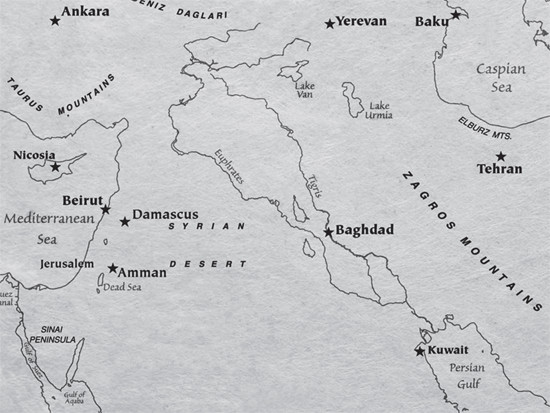Most Bible commentaries suggest the Garden of Eden was situated in the Middle East, near the Tigris and Euphrates Rivers. This idea comes from the description in Genesis 2:8–14:
The Lord God planted a garden eastward in Eden, and there he put the man whom he had formed. And out of the ground the Lord God made to spring up every tree that is pleasant to the sight and good for food. The tree of life was in the midst of the garden, and the tree of the knowledge of good and evil. A river flowed out of Eden to water the garden, and there it divided and became four rivers. The name of the first is the Pishon. It is the one that flowed around the whole land of Havilah, where there is gold. And the gold of that land is good; there is bdellium and onyx stone. The name of the second river is the Gihon. It is the one that flowed around the whole land of Cush. And the name of the third river is the Tigris, which flows east of Assyria. And the fourth river is the Euphrates.
Even renowned theologian John Calvin grappled with pinpointing the Garden of Eden’s exact location. In his commentary on Genesis, he noted:
Moses says that one river flowed to water the garden, which afterward would divide itself into four heads. It is sufficiently agreed among all, that two of these heads are the Euphrates and the Tigris; for no one disputes that . . . (Hiddekel) is the Tigris. But there is a great controversy respecting the other two. Many think that Pison and Gihon are the Ganges and the Nile; the error, however, of these men is abundantly refuted by the distance of the positions of these rivers. Persons are not wanting who fly across even to the Danube; as if indeed the habitation of one man stretched itself from the most remote part of Asia to the extremity of Europe. But since many other celebrated rivers flow by the region of which we are speaking, there is greater probability in the opinion of those who believe that two of these rivers are pointed out, although their names are now obsolete. Be this as it may, the difficulty is not yet solved. For Moses divides the one river which flowed by the garden into four heads. Yet it appears, that the fountains of the Euphrates and the Tigris were far distant from each other.1
Calvin realized that the Genesis 2 description of the Garden of Eden, detailing four rivers originating from a single source, doesn’t align with the geography of the modern Tigris and Euphrates Rivers. The Bible clearly states a single river divided into four, a configuration not found in the Middle East today.
 Map
Map
Interestingly, Calvin further considered a significant factor:
From this difficulty, some would free themselves by saying that the surface of the globe may have been changed by the deluge. . . .2
This perspective is crucial. The global, catastrophic Flood during Noah’s time would have dramatically reshaped the Earth’s surface. If, as creationists contend, the vast layers of sedimentary rock covering much of the globe are a result of this Flood, then determining the original location of the Garden of Eden becomes incredibly challenging. The pre-Flood world would be vastly different from what we see today.
Furthermore, the region of the present-day Tigris and Euphrates Rivers rests upon hundreds of feet of sedimentary strata, much of which contains fossils. These fossil-rich layers are attributed to the Flood. It’s illogical to place the perfect Garden of Eden, a place untouched by death before sin, on top of Flood sediments filled with billions of dead organisms.
This raises a valid question: why do rivers named Tigris and Euphrates exist in the Middle East today?
Consider the example of Australia. Many places bear names familiar from England, like Newcastle. This is because early settlers from England carried familiar names to their new settlements in Australia, reapplying them to new locations.
Similarly, the United States has rivers named Thames, Severn, and Trent, mirroring prominent UK rivers. This pattern of naming new places after familiar ones from the old country is a common human practice.
Following the Flood, when Noah and his family emerged from the ark in the region we now call the Middle East (around the Mountains of Ararat), it would be natural for them to use names from the pre-Flood world, such as Tigris and Euphrates, to name rivers and landmarks in the post-Flood world. This act of renaming would serve as a connection to their lost world.
Ultimately, the precise location of the Garden of Eden remains unknown. Insisting it was in the area of today’s Tigris and Euphrates ignores the profound impact of Noah’s global Flood and inadvertently suggests death existed before sin, contradicting biblical teaching. The Flood drastically altered the Earth, making the pre-Flood geography, including Eden’s location, unrecognizable.
References
[1] John Calvin, Commentary on Genesis, vol. 1, Genesis 1:1–15:21, trans. John King (Edinburgh: The Calvin Translation Society, 1847), pp. 107–109.
[2] Ibid., p. 109.


